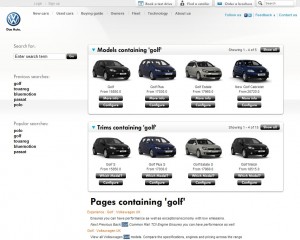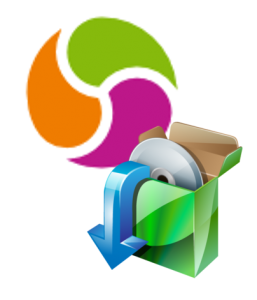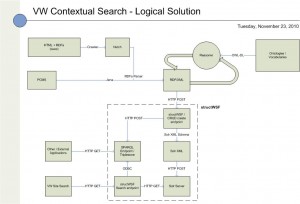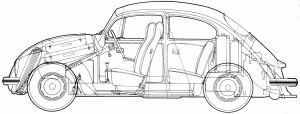Why have Mike Bergman and I chosen to develop no less than three major open source projects (structWSF, conStruct and the Semantic Components), encompassing more than 100 000 lines of new code and leveraging between 30 to 50 other open source software and libraries? Why have we open sourced all our software? Why has open source formed the core business strategy of Structured Dynamics in the last three years? How have we been able to profitably sustain the company, even in the midst of the global economic crisis that began in 2008?
I will try to answer these questions in this blog post, perhaps even providing some guidance for newer startups that may follow behind us.
Why Open Sourcing?
Why did Structured Dynamics chose to open source all of its software? There are multiple reasons why people and businesses choose to go open source. For some, it is because they think that it is where the market place is moving. For others it is because they think that a community will emerge around their effort, and then get free resources that improve the piece of software. Some think that their software will promptly be reviewed by professional programmer. Others may think that their system will become more secure. Etc.
For Structured Dynamics the reason why we choose to go open source is somewhat different:
We perceived that by open sourcing our complete software stack we could bootstrap the company without any external investment.
Making a Living out of Open Source Projects
There are multiple ways to do a living from an open source project:
- Doing consultancy work related to the project
- Implementing the software(s) into clients’ computer environment(s)
- Selling training classes
- Selling support contracts
- Selling maintenance contracts
- Selling hosted instances of the software (the SaaS model for one)
- Selling development time to improve some part(s) of the software
- Creating conferences around their open source projects
- Selling proprietary extensions
- I am probably missing a few, so please add them in a comment section below, and I will make sure to add them to this list.
Depending on the software you are developing, and depending on the business plan of your company, you may be doing one — or multiple — of these things to generate some money from your open source projects.
At Structured Dynamics we are doing some of them: we do get consultancy contracts related to the Open Semantic Framework and we do implement OSF in our clients’ computer environments.
But, more importantly, we are also doing development contracts related to the framework. In fact, each project we are working on is quite different. Our major projects involve companies that reside in totally different domains, have different needs and need to accommodate different kinds of users. However, most of the projects share the same core needs, and all of them advance the core technology in ways meaningful to our vision. We choose our customers — and , of course, vice versa — based on a true sense of partnership wherein both parties have their objectives furthered.
Let’s see how we use these relationships to drive the development of the Open Semantic Framework.
Open Source Project as a Pool of Resources
In the last three years, Structured Dynamics has attracted multiple companies and organizations that share our vision, and which are willing to invest in the Open Semantic Framework open source project. (See Mike’s recent post on business development for a bit more on that aspect of things.) Each of these clients did want to use the OSF framework for their own needs. However, each of them did want to do something special that was not currently implemented in the framework.
What we created in these three years is a pool of resources that we used to develop the framework such that it accommodates the needs of each of our clients. Each of our clients then becomes a participant to the shared pool of innovation. Our clients have been willing to invest in the open source framework because they need their own features and because they know that they will benefit from what other participants of the pool will invest themselves down the road.
In that scenario, we are the managers of a pool of resources. We have the vision of where we want the framework to go, we know the roadmap of the project and we know the needs of each participant (our clients). What we do is to try to optimize the resources we get from each of our clients by developing the framework such that it can accommodate as broad of a spectrum of participants as possible. Then, we seek to find new participants that have some needs that will help us continue to develop the next steps of the roadmap. In this manner, we Jacob’s Ladder our existing work to increase the capabilities for later clients, but earlier clients still benefit because they can upgrade to the later improvements. This is a self-sustaining model to continue to move the development of the framework forward.
By finding new clients, what we do is to give a return on investment to the other pool participants. Most of the new features that we develop for these new clients will benefit the other participants to the pool and will create new possibilities for them without any additional investment. All of our first clients have implemented what other participants later invest into the pool, thus crystallizing and augmenting their return on investment by using these new features.
Open Source is Not Just About Software
Open Source is not just about pieces of code, and this is quite important to understand. What we have open sourced with the Open Semantic Framework is much more than a series of code sources. We open sourced the entire framework:
- The source codes
- The documentation
- The processes
- The methodologies
We term this comprehensive approach our total open solution.
This distinction with other open source projects is an essential differentiator with our approach. We choose to open source all of the pieces related to the framework. What drove this decision is a simple sentence that shows our philosophy behind it:
“We’re Successful When We’re Not Neededâ€
If the APIs, processes and methodologies are not properly documented, it means that we would certainly be needed by our clients, which would mean that we failed to open source our solution. But since we are working to open source our code, our processes and our methodologies, we are on the way to successfully open source the Open Semantic Framework since we won’t be needed by our clients.
This business approach is not as crazy as it sounds. We are free to work on new and important innovations, and are not basing our company culture on dependency and a constant drain by our customers. I know, it does not sound like Larry Ellison, but sounds good to us and our clients. It is certainly not a maximum revenue objective built on the backs of individual clients.
Our life is more fun and our clients trust us with new stuff. Further, each step of the way, we are able to leverage our own framework for unbelievable productivity in what we deliver for the money. But that is a topic for another day.
We think Structured Dynamics’ business approach is a contemporary winning strategy. Our customers get good and advanced capabilities at low cost and risk, while we get to work on innovative extensions that are raising the semantic baseline for the marketplace. Who knows if we will always continue this path, but for now it is leading to sustained development and market growth for open semantic frameworks, including our own OSF.







